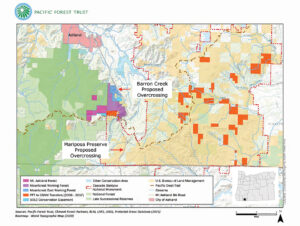FOREST FLASH July 2022
In Pacific Forest Trust’s e-newsletter, Forest Flash, we send you the most recent PFT news and updates on forests, clean water, climate, and wildlife. Subscribe here.
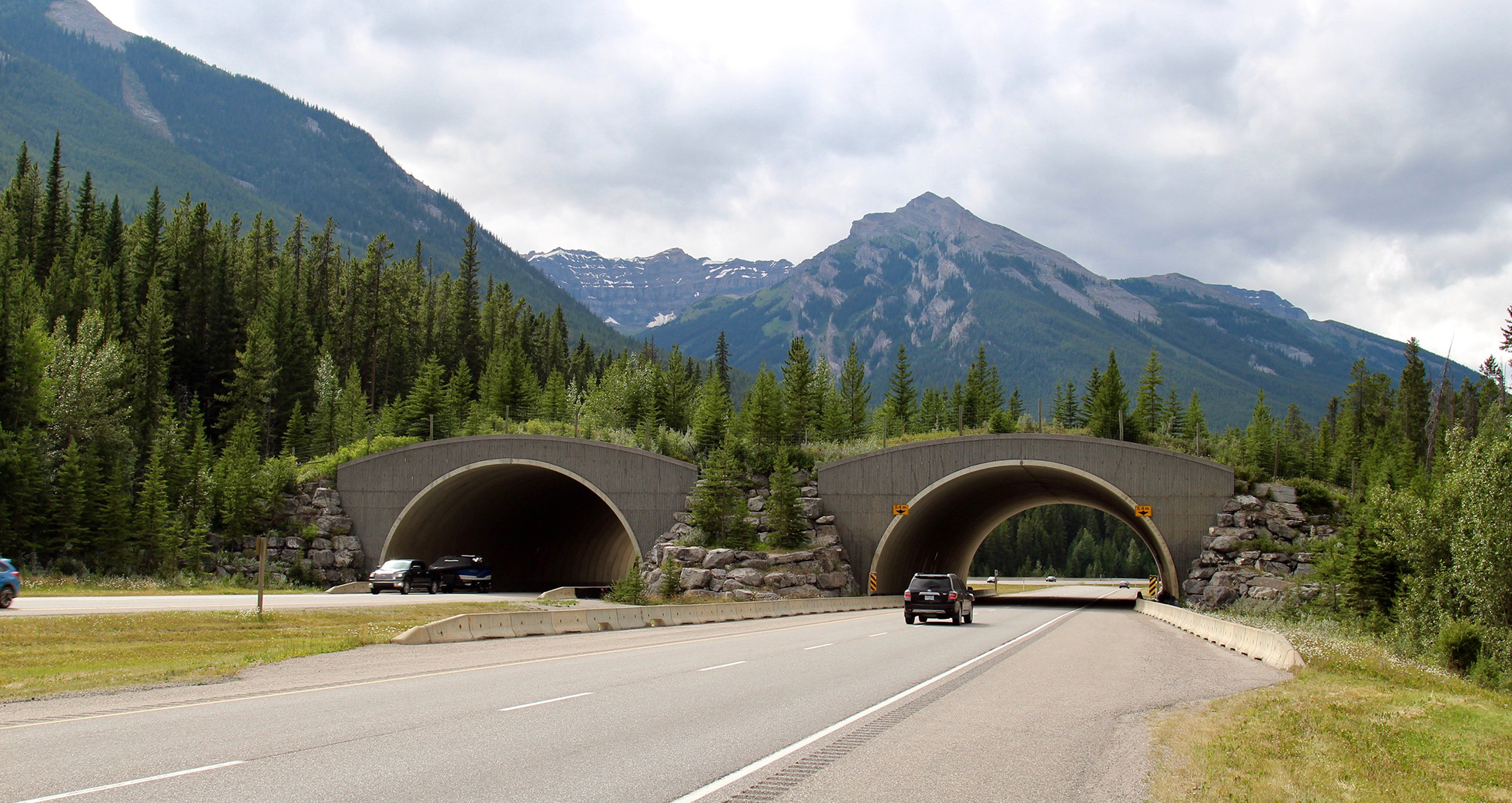
The difference in having wildlife overpasses is literally a matter of life and death for both wildlife and people. Photo credit: daveynin
For the past two years, Pacific Forest Trust has been working with the Southern Oregon Wildlife Crossing Coalition (SOWCC) to promote safe passage for wildlife across Interstate 5 (I5) as it cuts across the Cascade-Siskiyou National Monument and Siskiyou Crest. Now, the Oregon Department of Transportation (ODOT) has proposed two new wildlife overpasses across I-5. PFT has advocated for overpasses here and strongly supports this proposal. I5 has long been recognized as a barrier to habitat connectivity in this region, which is globally recognized for its biodiversity. Overpasses are a critical tool for ensuring safe passage for migrating animals, increasing road safety, and even saving the state money by avoiding the costs associated with collisions.
With over 25 years of work enhancing conservation and habitat connectivity in the Cascade-Siskiyou region, PFT feels these crossings are key for achieving wildlife adaptation in the region, especially with climate change forcing migration upslope and west towards the cooler coast. Our projects along the Siskiyou Crest (including our Mountcrest Working Forest easements and the proposed Mount Ashland Demonstration Forest) provide direct connections with other protected lands, safeguard the critical Neil Creek watershed, and provide a climate refuge for migrating species. The proposed Barron Creek overpass would connect directly to our conserved Mountcrest East property. While there will still be a significant journey ahead before these crossings are complete, Pacific Forest Trust will be working with the SOWCC every step of the way.
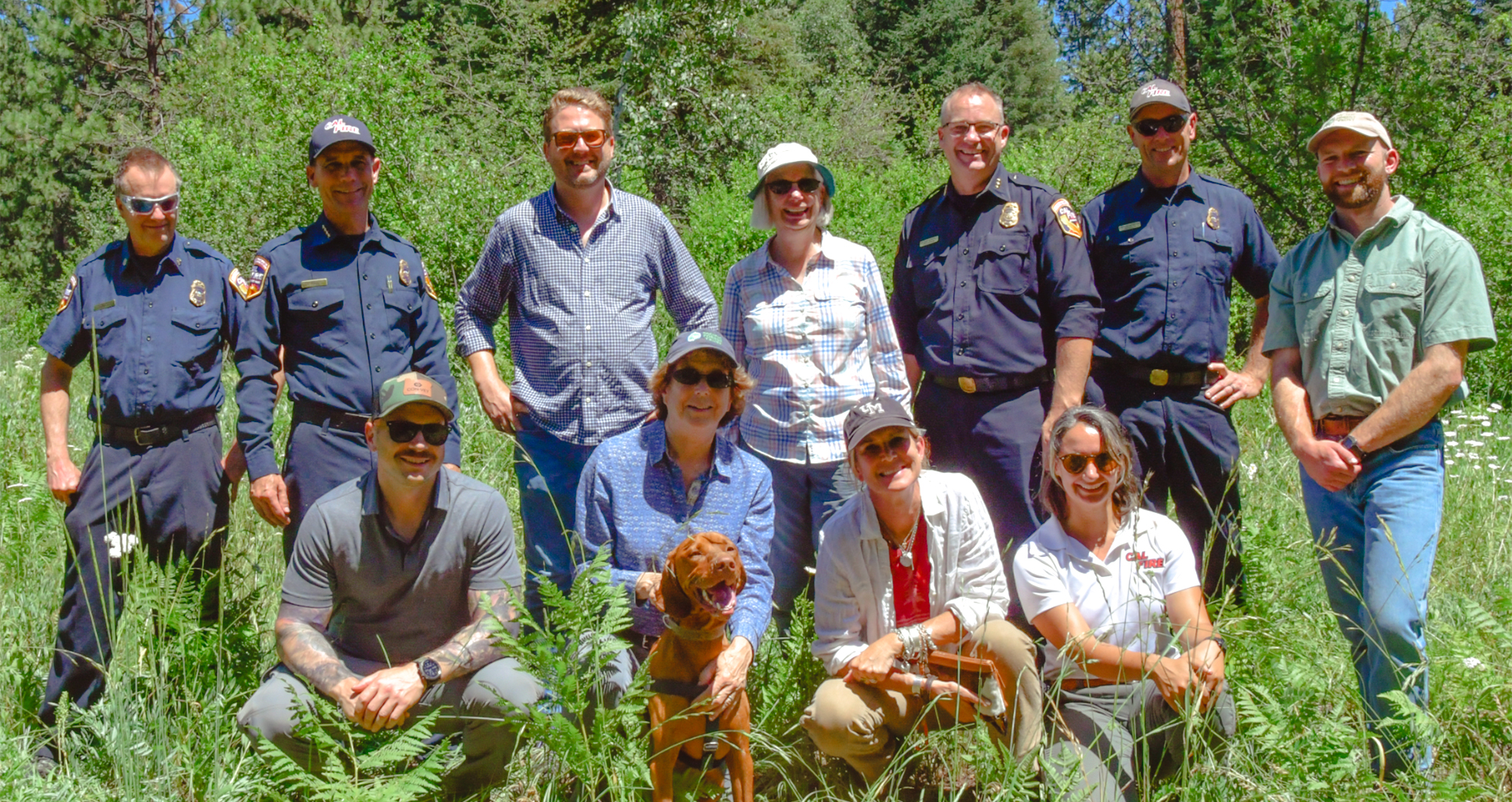
Some of California’s most productive and diverse conifer forests are found in the Mt. Shasta Headwaters region, especially in the McCloud watershed, which provides California’s coldest, cleanest water into the state’s water system. There are also a number of communities nestled along the foot of Mt. Shasta—from the town of McCloud to the city of Mt. Shasta. PFT has conserved a network of well-managed forests in the McCloud and upper Sacramento watersheds with the goal of protecting the state’s water supply, key wildlife habitat, and long-term supplies of high-quality timber while also ensuring the safety of these communities.
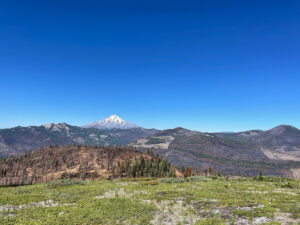
Click to enlarge: Fires burn in a mosaic across the landscape, as illustrated by the 2021 Antelope Fire seen here. While devastating to communities, recent studies show fires remove only 2% of landscape carbon.
In mid-July, PFT toured some of these projects with CalFire staff to assess the role of conserved managed lands in the broader landscape. Visiting PFT’s Dogwood Butte and McCloud Soda Springs projects illustrated how managing for older, more naturally diverse forests with larger trees within stands enhances fire resilience and increases the likelihood of more natural “good fire” behavior. As George Morris III, Region Chief of CAL FIRE Northern Region, noted, “The tour was an eye-opener for me and in many ways the management of the site was unlike the forests I have come to know across our state. The benefit of this management model is abundantly clear from my perspective. These forests managed for more open, natural conditions with larger trees are less likely to burn catastrophically and make for a safer fire regime.”
The synergy of integrating conservation with active management is a key tool for enhancing California’s forest resilience and safety under climate change, as well as key to securing its water supply.
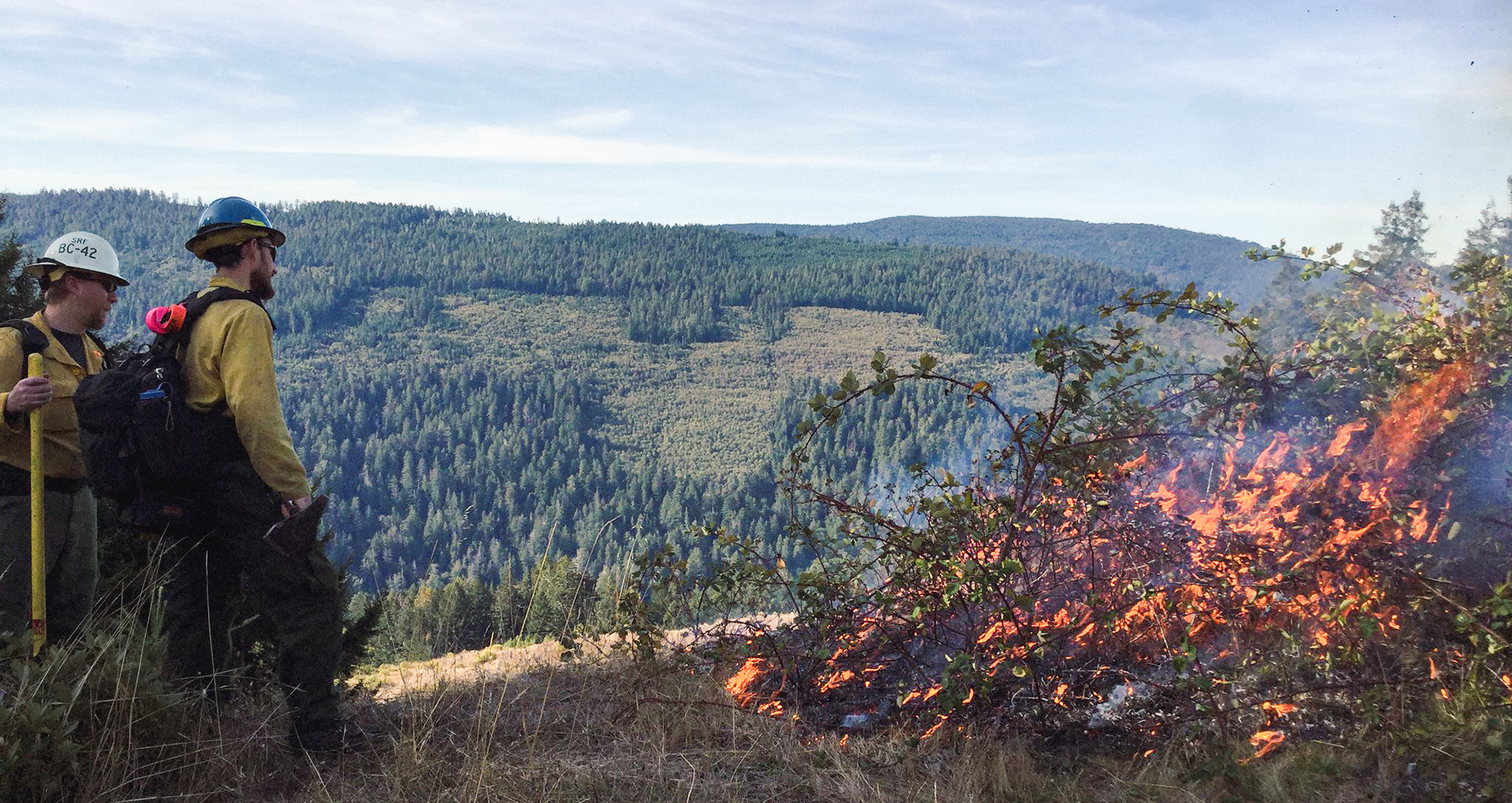
California’s forests are all fire adapted, including the coastal Redwoods, a temperate rainforest type. These magnificent forests, dubbed the “asbestos” forests for their traditional fire resilience, have a natural history of relatively frequent, low-intensity fire. However, with the recent century of fire suppression, fuels have built up even in these moist forests with increasing fire risks, as well as negative impacts on soil fertility and moisture-holding ability (charcoal helps retain soil moisture) and on understory plant communities. PFT has long been committed to restoring a more natural fire regime management approach, and now will be working to do that directly in the field. Thanks to a grant from the California State Coastal Conservancy, PFT will be using fire as part of redwood forest restoration on the van Eck California forest.
PFT will be preparing an initial 80-acre area of the van Eck forests in the Fieldbrook area for prescribed fire by preparing a burn plan, thinning out dense young stands, pruning and removal of other surface fuels before introducing fire. The fire will help remove dense thatch, non-native plants and understory shrubs, and improve soil conditions for replanting forest areas that had been converted to pasture in the 1900s. A key part of the plan is to consult with the local community, experts in the UC Extension, Redwood National Park, and others with significant experience with fire as a restoration management tool. Our goals are to reduce fire in this High Fire Hazard Severity Zone and promote community safety in this frontline disadvantaged community.
This work will significantly improve the climate resilience for both the human and natural ecological communities and should also serve as a model for others across the state, demonstrating value of prescribed burning to improve resilience and safety within the Wildlands Urban Interface.
Give with confidence. Charity Navigator awarded Pacific Forest Trust a perfect score in finance and accountability.

